Wilpattu National Park, located in the northwest of Sri Lanka, stands as one of the country’s oldest and largest national parks. Established in 1938, the park spans approximately 1,317 square kilometers, making it a haven for nature lovers and wildlife enthusiasts. The name ‘Wilpattu’ translates to ‘land of lakes,’ a nod to the numerous natural lakes or ‘villus’ scattered throughout the park, which play a crucial role in its unique ecosystem.
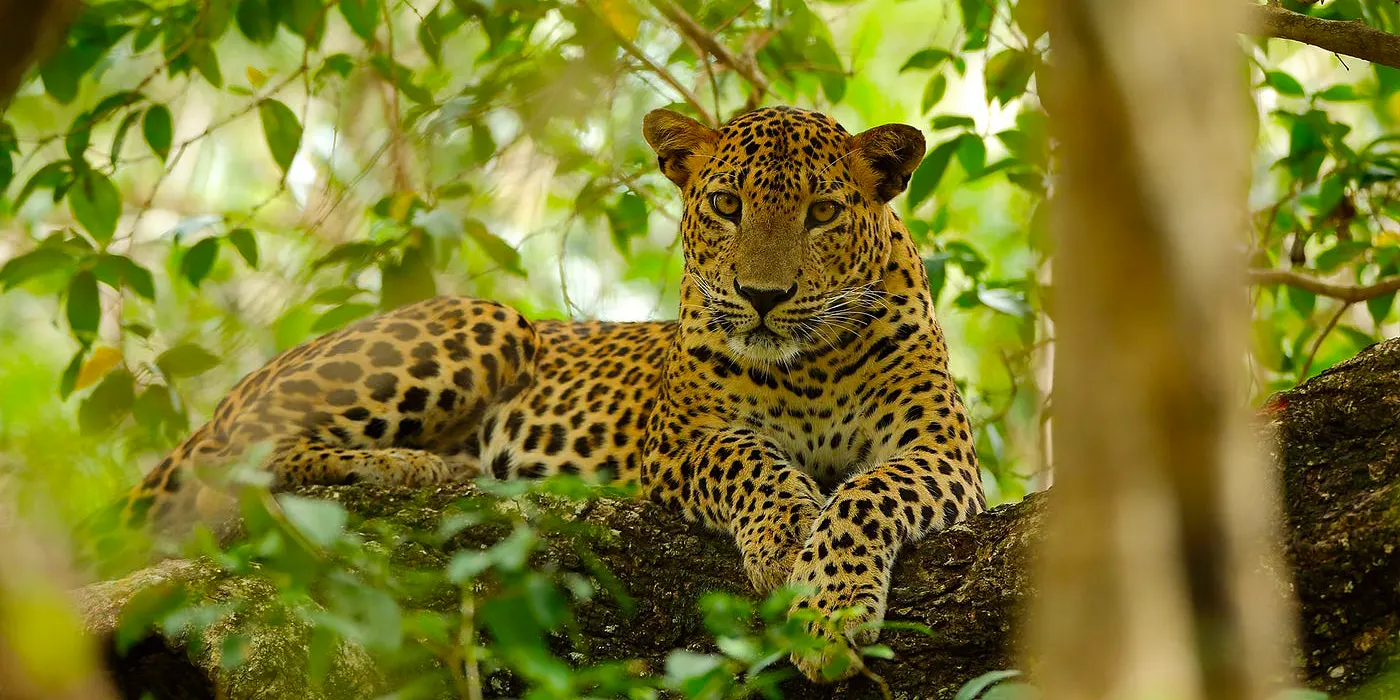
The park’s landscape is a mosaic of dry lowland forest, grassy plains, and wetlands, providing diverse habitats that support a rich variety of flora and fauna. Among its most notable inhabitants are the elusive Sri Lankan leopard, the sloth bear, and a plethora of bird species, making it a prime destination for wildlife photography and birdwatching. The park’s dense forest cover and numerous water bodies create an ideal environment for these species to thrive, contributing significantly to Sri Lanka’s biodiversity.
Wilpattu National Park’s conservation efforts are vital in preserving this unique ecosystem. The park faced significant challenges during the civil conflict, which led to its temporary closure. However, since reopening, concerted efforts by the government and conservationists have been instrumental in rejuvenating the park’s wildlife populations and natural beauty. The park’s commitment to conservation not only helps maintain ecological balance but also supports local communities through eco-tourism.
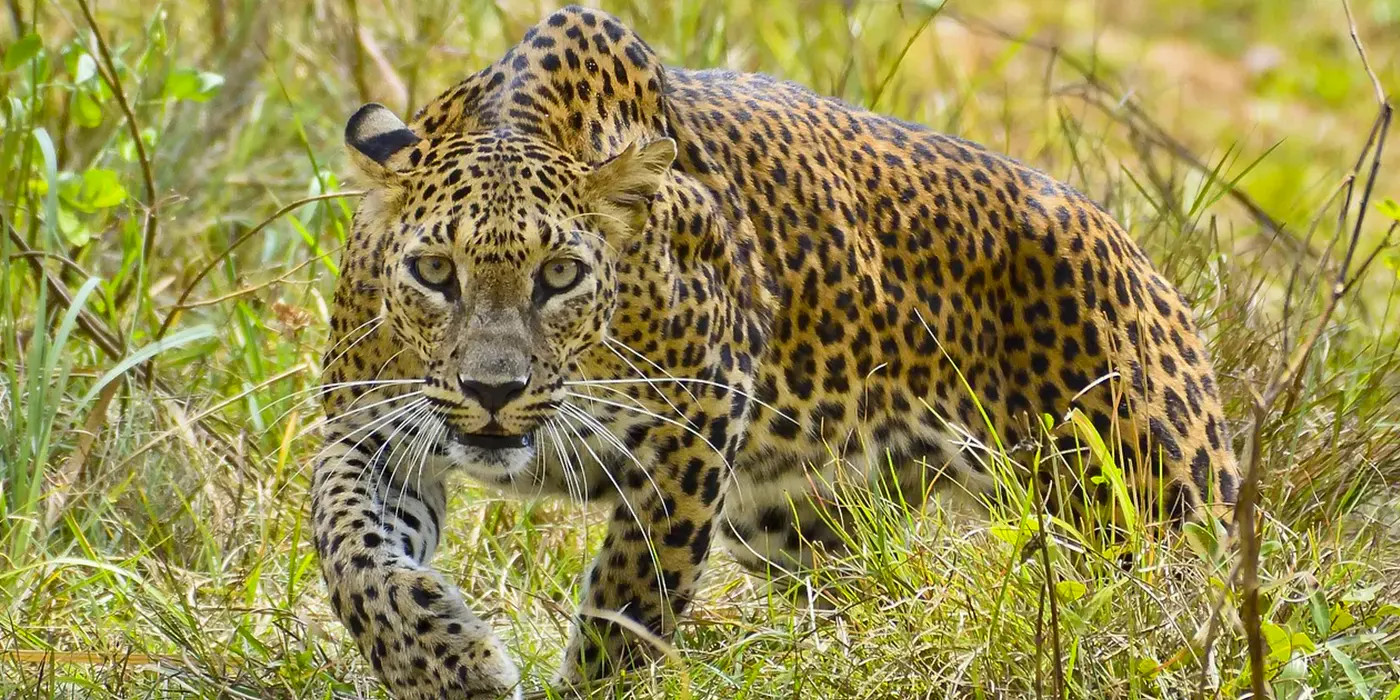
Explore Sri Lanka in 8 Days!
Our top-rated all-inclusive itinerary – includes transportation, services, and bed % breakfast hotels. Discover why it’s our bestselling journey! Click to Start Your Adventure!
A visit to Wilpattu National Park offers an unparalleled opportunity to immerse oneself in the natural beauty and wildlife of Sri Lanka. Whether you’re navigating the park’s rugged trails or observing the serene villus from a safari vehicle, Wilpattu promises an unforgettable adventure. Its significance in the realm of conservation and its contribution to the island’s rich biodiversity make it a must-visit destination for anyone passionate about nature and wildlife.
How to Get to Wilpattu National Park
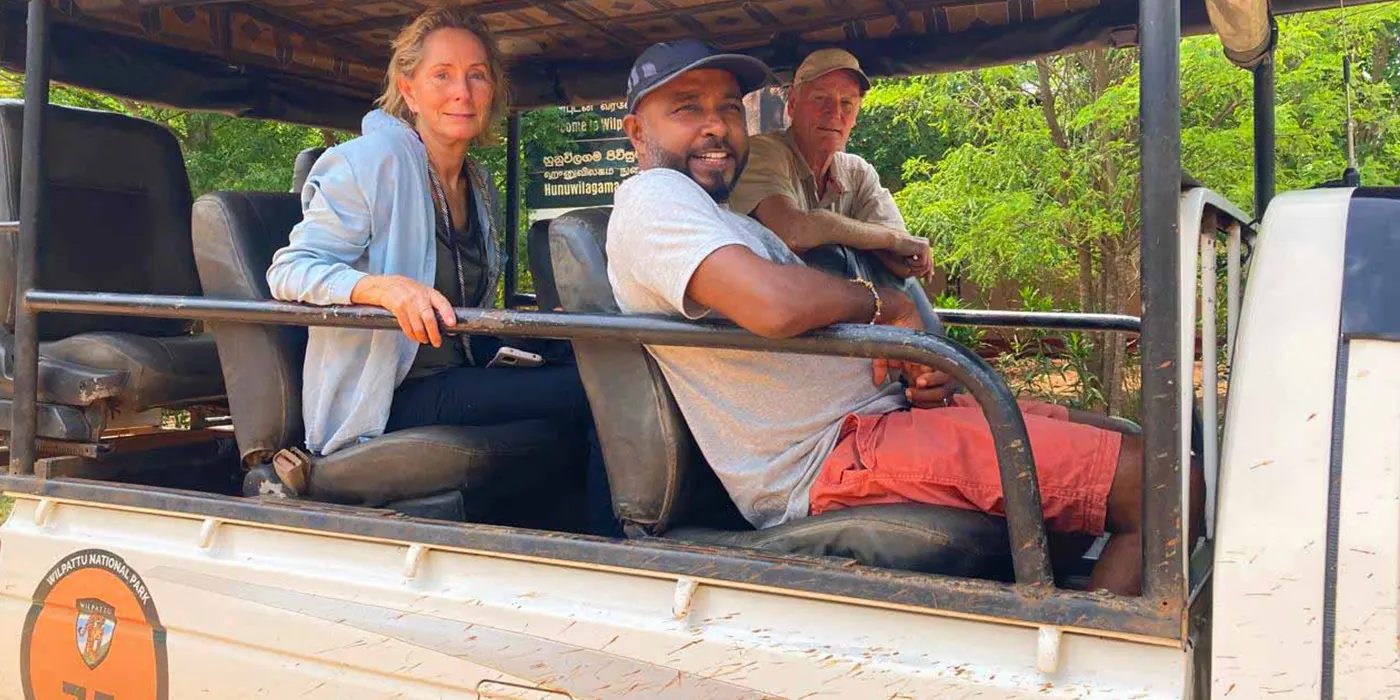
Wilpattu National Park is one of the most renowned wildlife destinations in Sri Lanka, and reaching this natural haven is relatively straightforward from major cities such as Colombo and Anuradhapura. Travelers have multiple transportation options, allowing them to choose the most convenient means to experience the park’s captivating landscapes and diverse fauna.
From Colombo, the capital city of Sri Lanka, Wilpattu National Park is approximately 180 kilometers away. One popular option is to travel by bus. Regular buses operate from Colombo to Anuradhapura, a city closer to the park. From Anuradhapura, you can catch another bus or hire a taxi to reach Wilpattu. The total journey by bus typically takes around 4 to 5 hours, depending on traffic conditions.
Alternatively, you can opt for train travel, which offers a scenic and comfortable journey. Trains from Colombo to Anuradhapura run multiple times a day. Upon arrival in Anuradhapura, visitors can either take a bus or hire a private vehicle for the final leg of the journey to Wilpattu National Park. The train journey itself takes approximately 3 to 4 hours.

Private vehicles provide the most flexibility and convenience, especially for those who prefer a direct route. Car rentals are available in Colombo, and driving to Wilpattu National Park via the A3 and Puttalam-Mannar highways is a straightforward option. The drive typically takes around 3.5 to 4 hours, offering the opportunity to enjoy the scenic countryside en route.
For international travelers, the nearest airports are Bandaranaike International Airport in Colombo and the domestic SLAF Anuradhapura Airport. From these airports, visitors can follow the aforementioned transportation options to reach Wilpattu National Park.
In summary, whether you choose to travel by bus, train, or private vehicle, getting to Wilpattu National Park is an accessible and enjoyable part of your overall safari adventure. Each mode of transportation offers unique advantages, ensuring a smooth journey to this spectacular wildlife destination.
Best Time to Visit Wilpattu National Park
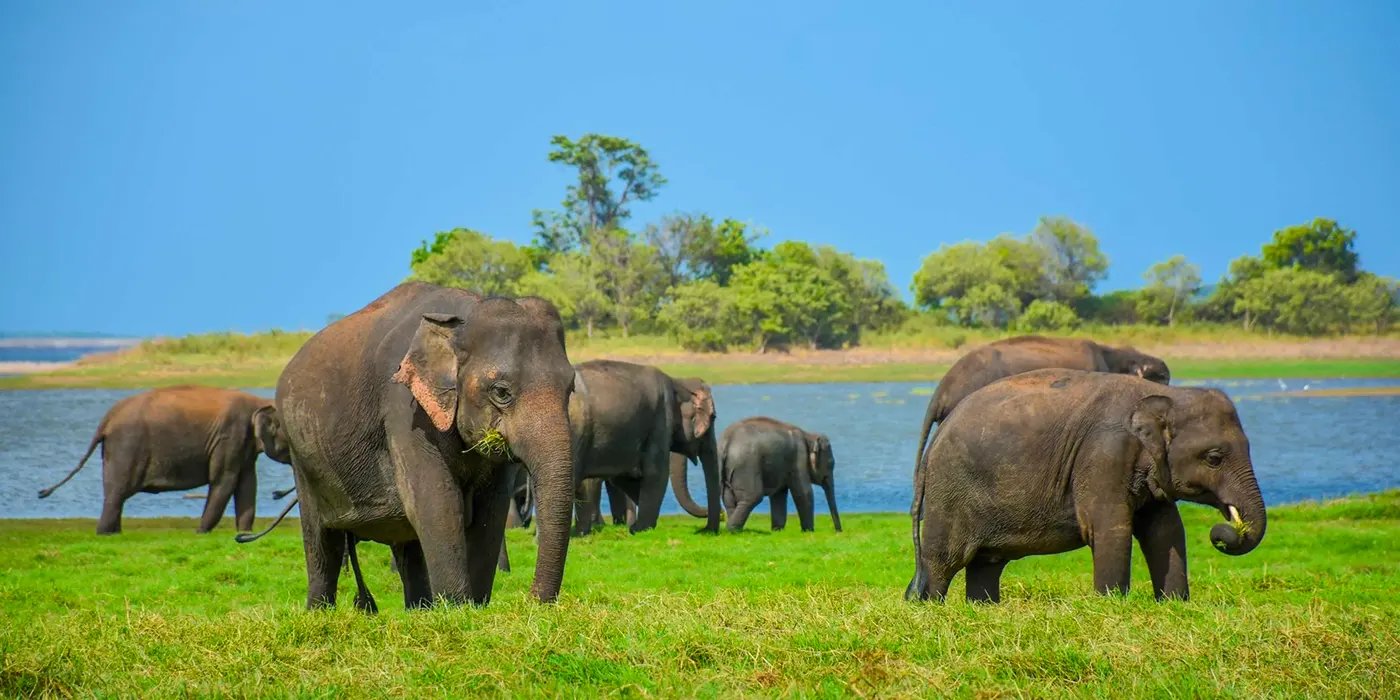
Wilpattu National Park, renowned for its rich biodiversity and scenic landscapes, offers unique experiences throughout the year. However, the timing of your visit can significantly influence your overall experience, particularly in terms of weather, wildlife sightings, and the park’s accessibility.
The dry season, typically spanning from May to September, is often considered the best time to visit Wilpattu National Park. During these months, the park’s water sources become limited, drawing a variety of wildlife, including leopards, elephants, and bird species, to the remaining waterholes. This concentration of animals around water sources increases the likelihood of memorable wildlife sightings. Additionally, the dry season’s clear skies and warm temperatures make for comfortable safari conditions and easier navigation through the park’s terrain.
Conversely, the wet season, from October to April, brings its own set of advantages and challenges. The increased rainfall during these months rejuvenates the park’s vegetation, creating lush, green landscapes and vibrant flora. This period is also ideal for birdwatching, as migratory birds flock to Wilpattu National Park. However, the wet season often results in muddy and sometimes impassable roads within the park, which can complicate travel and limit access to certain areas.
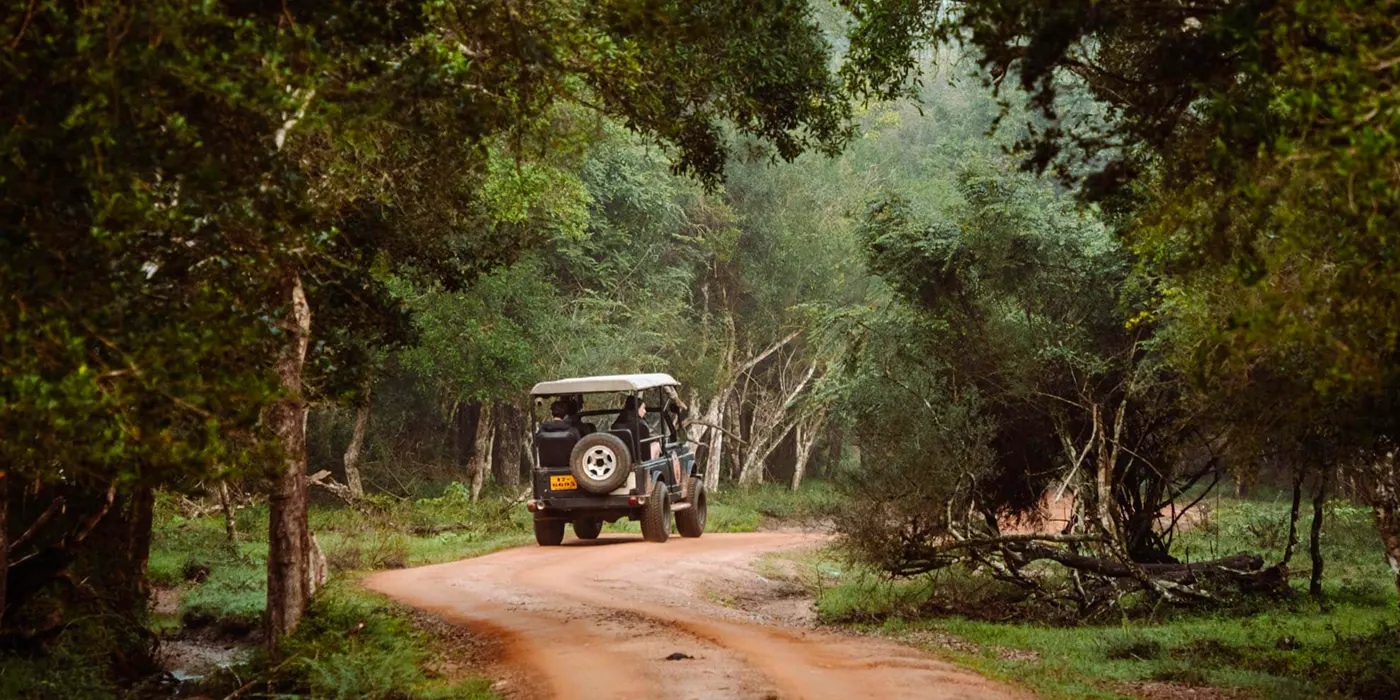
Despite these seasonal differences, each period offers distinctive opportunities for visitors. The dry season’s concentrated wildlife activity and favorable weather conditions make it particularly appealing for first-time visitors and those keen on maximizing their chances of spotting the park’s iconic species. On the other hand, the wet season’s verdant landscapes and avian diversity provide a unique experience, especially for nature enthusiasts and photographers.
Ultimately, the best time to visit Wilpattu National Park depends on your personal preferences and priorities. Whether you seek the thrill of close encounters with wildlife during the dry season or the serene beauty of the wet season’s lush environment, Wilpattu National Park promises an unforgettable adventure at any time of the year.
Sri Lanka Weather: Best & Worst Time to Visit by Month
Wildlife in Wilpattu National Park

Wilpattu National Park, renowned for its rich biodiversity, is a sanctuary for a myriad of wildlife species. Among its most celebrated inhabitants are the elusive leopards, making the park a prime location for those eager to witness these majestic predators in their natural habitat. The park’s dense forest cover and numerous water bodies create an ideal environment for leopards, increasing the likelihood of sightings.
In addition to leopards, Wilpattu is home to a significant population of elephants. These gentle giants can often be observed roaming the park’s vast landscapes, particularly near water sources. The sight of herds of elephants, both young and old, is a testament to the park’s thriving ecosystem.
The park is also a haven for sloth bears. These nocturnal creatures are relatively more challenging to spot, but their presence adds to the park’s allure. The dense forests of Wilpattu provide the perfect cover for these shy animals, who are often seen foraging for berries and insects.

Bird enthusiasts will find Wilpattu a paradise, with over 200 species of birds recorded within the park’s boundaries. From the vibrant peafowl to the rare black-necked stork, the park offers a bird-watching experience like no other. The diverse avian population is supported by the park’s varied habitats, ranging from wetlands to thick forests.
Wilpattu National Park’s flora is equally impressive, with a variety of trees, shrubs, and aquatic plants contributing to its status as a biodiversity hotspot. The interplay between the park’s flora and fauna creates a dynamic ecosystem where species coexist and thrive.
Overall, Wilpattu National Park stands out not only for its prime leopard sightings but also for the diverse array of wildlife that calls it home. Its rich biodiversity and well-preserved habitats make it a must-visit destination for nature enthusiasts and wildlife photographers alike.
Wilpattu National Park Safari Experience
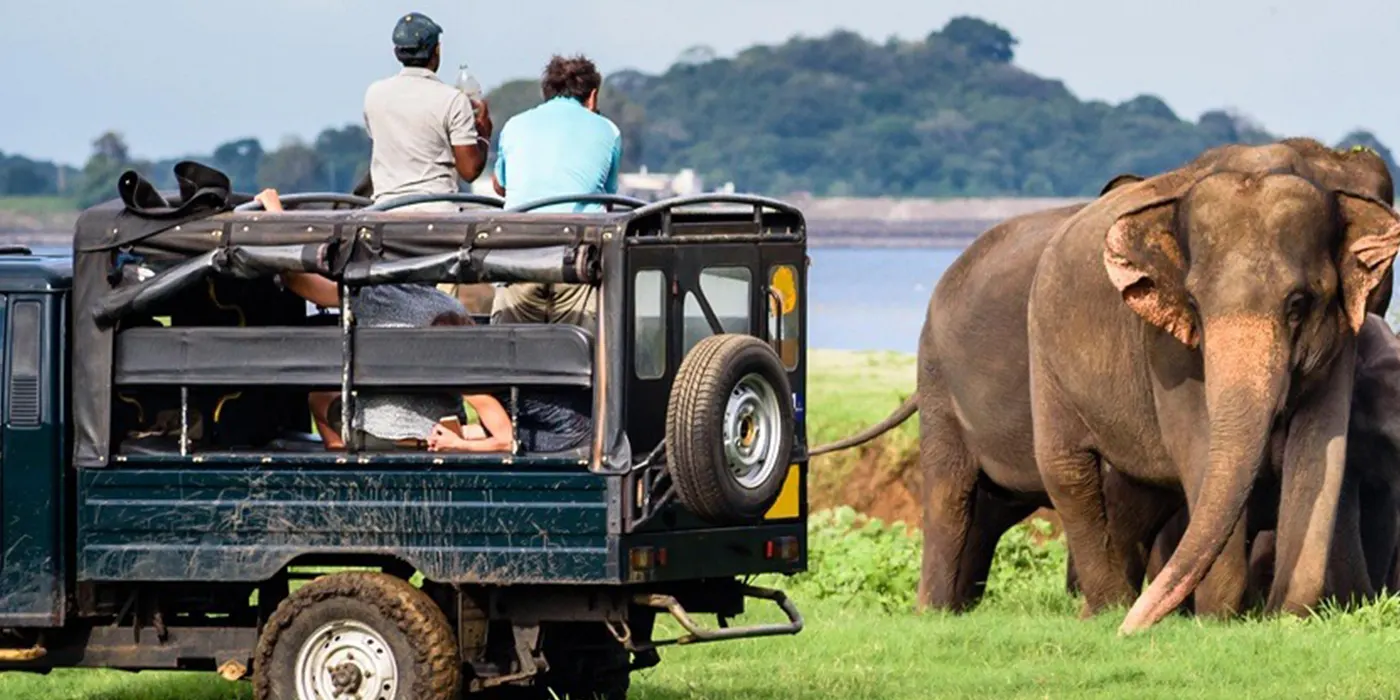
Embarking on a safari at Wilpattu National Park is an experience that offers an unparalleled glimpse into the wild heart of Sri Lanka. Tourists can choose from a variety of safari options, with guided jeep safaris being the most popular. These safaris typically last between three to four hours and offer the best chance to see the park’s diverse wildlife, including leopards, elephants, and a myriad of bird species. The cost for a guided jeep safari can range from $80 to $150 per person, depending on the duration and the tour operator’s reputation.
To maximize your safari experience, it is highly recommended to book with reputable guides or tour operator, who are known for their knowledgeable guides and well-maintained vehicles. The best times for wildlife sightings are early morning and late afternoon. Therefore, opting for a dawn or dusk safari increases your chances of witnessing the park’s inhabitants in their natural habitat.

Beyond the Tourist Trail!
Discover the hidden gems of Sri Lanka with our exclusive two-week itinerary. Experience off-the-beaten-path adventures, including transportation, guided tours, and bed & breakfast stays. Uncover ancient temples, pristine beaches, and thrilling safaris. Join us for a journey beyond the tourist trail!
When preparing for your Wilpattu National Park safari, it is essential to bring a few key items. Binoculars and a good quality camera will enhance your ability to observe and capture wildlife. Wear neutral-colored clothing to blend into the environment, and don’t forget a hat and sunscreen to protect against the tropical sun. Additionally, carrying a reusable water bottle and some snacks will keep you hydrated and energized throughout the journey.
By adhering to these tips and being well-prepared, visitors can ensure a memorable and enriching safari experience at Wilpattu National Park. Whether you are a seasoned wildlife enthusiast or a first-time safari-goer, the park offers a unique opportunity to connect with nature and witness the majesty of Sri Lanka’s wildlife.
Accommodation Options Near Wilpattu National Park

When planning your visit to Wilpattu National Park, selecting the right accommodation is crucial for an enjoyable experience. Visitors can choose from a variety of lodging options, ranging from luxury lodges to budget-friendly guesthouses, ensuring that there is something to fit every preference and budget.
For those seeking a luxurious stay, several high-end lodges are located in close proximity to the park entrance. These lodges offer a range of amenities including spacious rooms, gourmet dining, and guided safari tours. Popular luxury options include Leopard Trails, Thamaravila Wilpattu, and Mahoora Tented Safari Camp, both of which provide an exclusive and immersive experience in the wilderness.
Travelers on a budget will find numerous guesthouses and mid-range hotels that offer comfortable accommodations without breaking the bank. Places like Wilpattu Tree House and Wilpattu Safari Camp are known for their affordable rates and warm hospitality. These establishments often provide essential amenities such as air conditioning, Wi-Fi, and breakfast, making them convenient choices for visitors who wish to explore the park without splurging on accommodation.
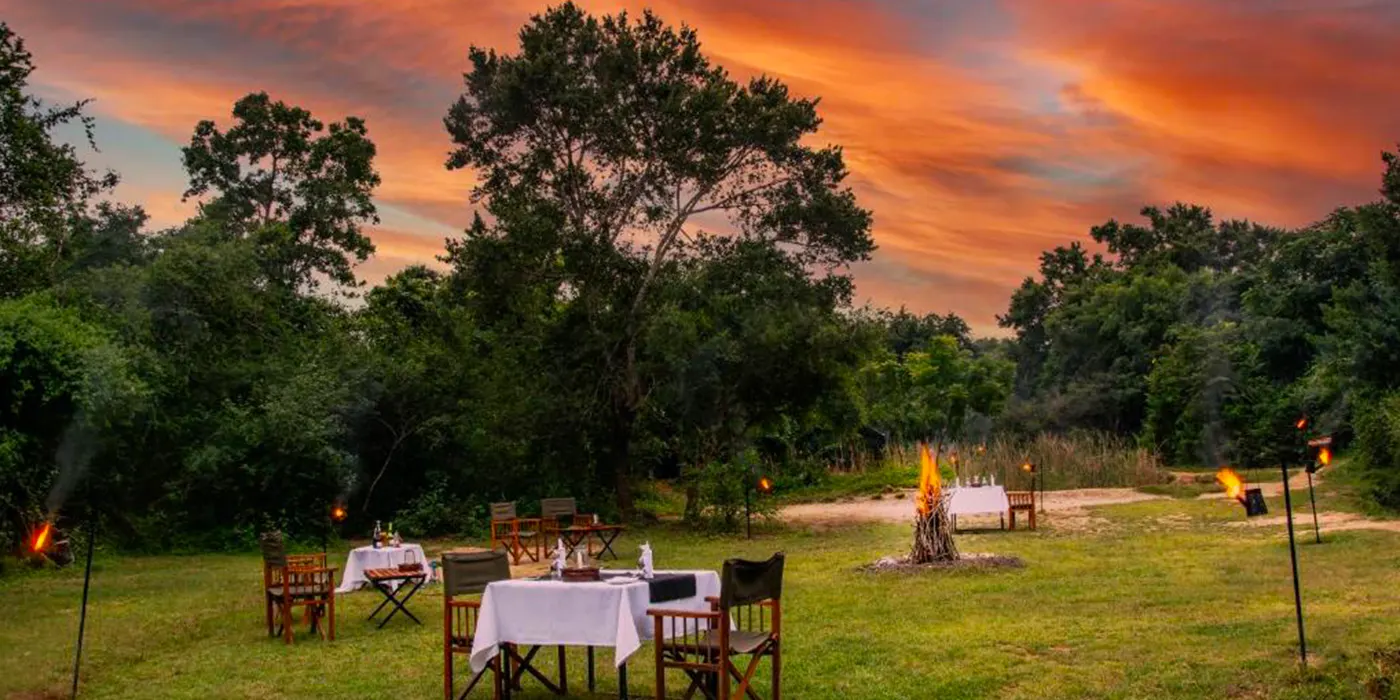
For a more unique lodging experience, eco-friendly options and camping sites are also available. Eco-lodges like Wilpattu Safari Camp focus on sustainable practices and aim to minimize their environmental footprint, offering an eco-conscious alternative for nature enthusiasts. Camping within or near the park is another exciting option, allowing guests to fully immerse themselves in the natural surroundings. Many camping sites provide basic facilities and guided tours, ensuring a safe and enjoyable stay.
Ultimately, the choice of accommodation near Wilpattu National Park depends on individual preferences and budget. Whether opting for the luxury of a lodge, the affordability of a guesthouse, or the adventure of camping, visitors are sure to find the perfect place to rest and rejuvenate after a day of safari adventures.
Tips for a Safe and Enjoyable Visit
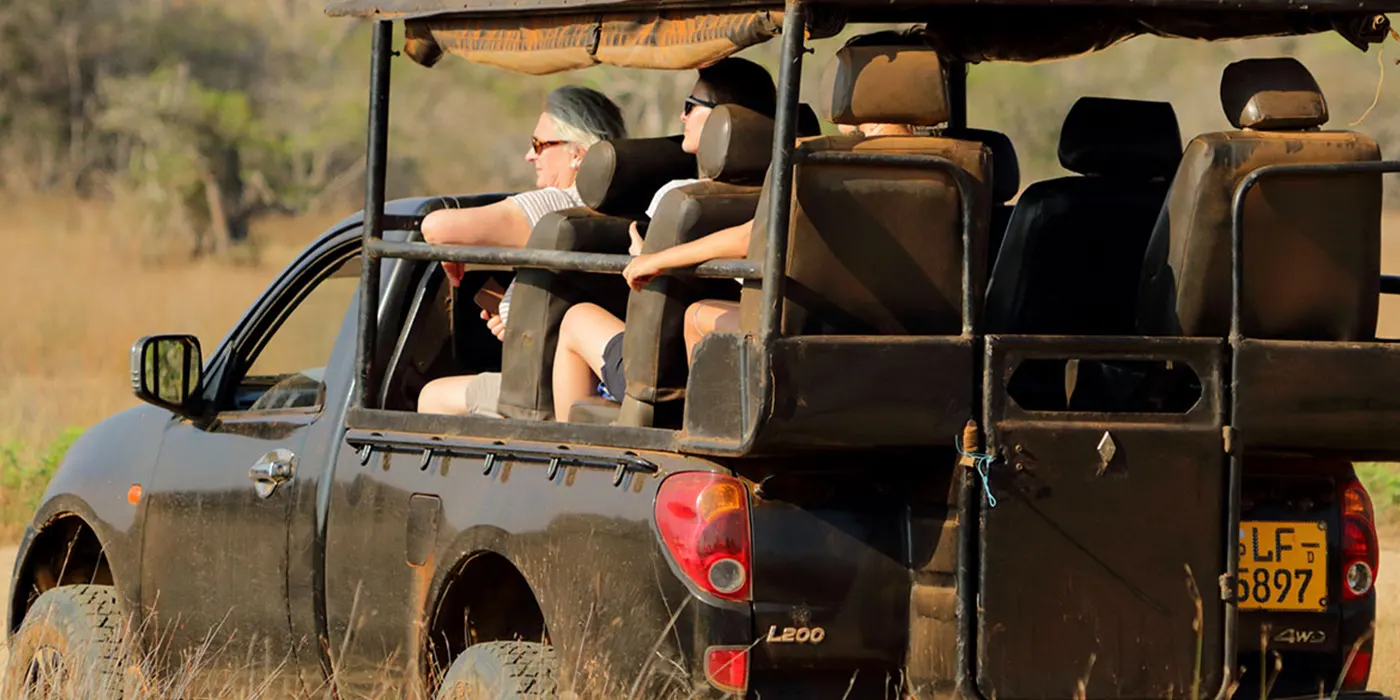
Visiting Wilpattu National Park offers a unique and enriching experience, but ensuring a safe and enjoyable trip requires some preparation and mindfulness. Here are some practical tips to help you make the most of your safari adventure.
First and foremost, prioritize your health by taking necessary precautions. It’s advisable to carry a first aid kit with essential medications, insect repellent, and sun protection. Staying hydrated is crucial, especially during warmer months, so always carry sufficient water. If you have any pre-existing medical conditions, consult your doctor before the trip, and ensure you have the necessary medications on hand.
Safety during safaris is paramount. Always follow the instructions provided by your tour guide and park authorities. Remain inside the vehicle at all times and avoid making loud noises or sudden movements that could startle the wildlife. Maintain a safe distance from animals, and never attempt to feed or touch them. It’s also important to wear appropriate clothing—light, breathable fabrics in neutral colors are recommended to blend into the natural surroundings.
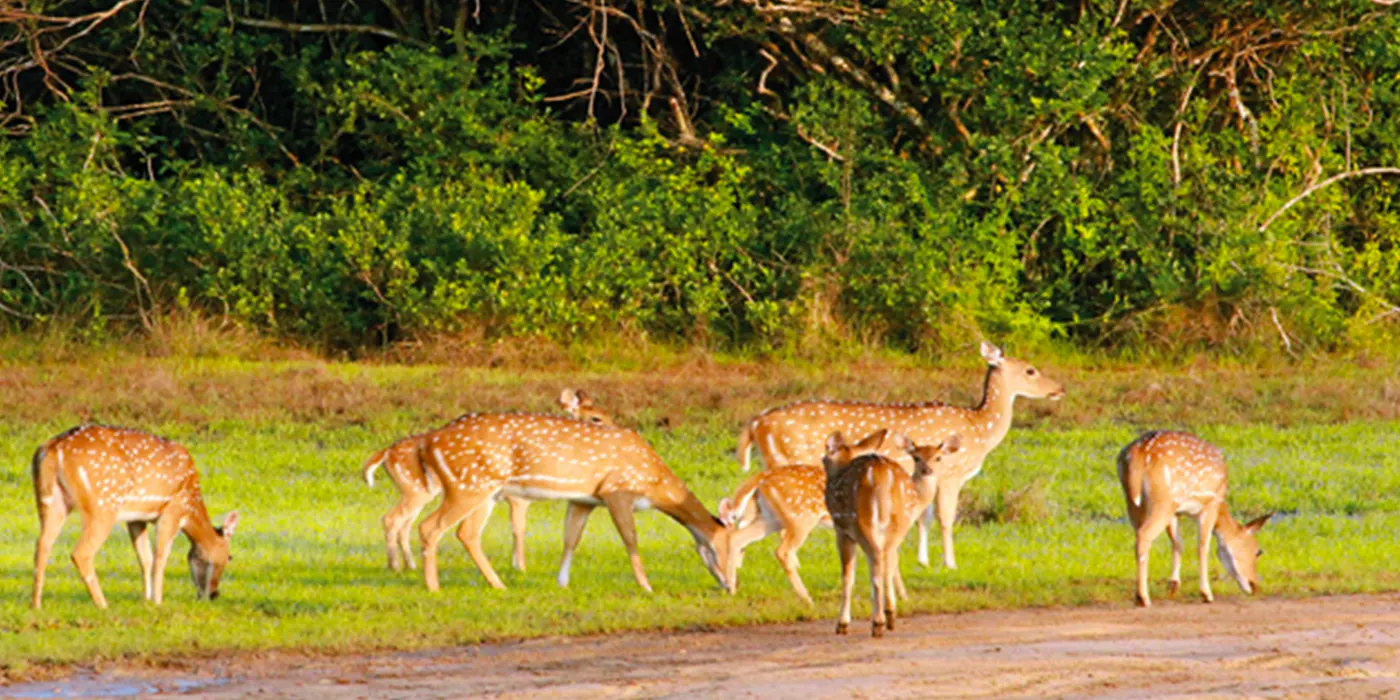
Environmental conservation practices are vital for preserving the natural beauty of Wilpattu National Park. Ensure that you dispose of waste properly, and avoid using plastic products that can harm the environment. Stick to designated paths and trails to minimize your impact on the ecosystem. Taking photographs is encouraged, but be mindful not to disturb the wildlife or their habitats in the process.
Respecting local wildlife is essential. Wilpattu National Park is home to a diverse range of species, including leopards, elephants, and various bird species. Observing them in their natural habitat is a privilege that comes with responsibility. Avoid actions that could disrupt their behavior or habitat. Additionally, it’s crucial to follow the park regulations and guidelines provided by tour operators and park authorities. These rules are in place to protect both visitors and the wildlife, ensuring a harmonious coexistence.
By adhering to these tips, you can ensure a safe, enjoyable, and responsible visit to Wilpattu National Park, enriching your experience while contributing to the conservation of this magnificent natural reserve.
Frequently Asked Questions (FAQs) about Wilpattu National Park
1. What are the entry fees for Wilpattu National Park?
The entry fees for Wilpattu National Park vary based on nationality and age. For foreign adults, the fee is approximately USD 25, while for children, it is around USD 15. Additionally, there is a vehicle charge and a service fee for the guide.
2. How can I book a safari in Wilpattu National Park?
You can book a safari through various means, including online travel agencies, local tour operators, or directly via the official Wilpattu National Park website. It is advisable to book in advance, especially during peak seasons, to secure your preferred dates and times.
3. What is the best time for wildlife sightings in Wilpattu National Park?
The optimal time for wildlife sightings in Wilpattu National Park is during the dry season, from February to October. During these months, animals are more likely to congregate around water sources, making them easier to spot. Early morning and late afternoon safaris are particularly advantageous for viewing a diverse range of wildlife, including leopards, elephants, and a variety of bird species.
4. What should I wear when visiting Wilpattu National Park?
Comfortable, lightweight clothing in neutral colors is recommended to blend into the natural surroundings and avoid startling the wildlife. Long sleeves and pants are advisable to protect against insect bites and the sun. Don’t forget to bring a hat, sunscreen, and a good pair of binoculars to enhance your safari experience.
5. Are there any accommodations available within the park?
Wilpattu National Park itself does not offer accommodations, but there are several lodges, guesthouses, and hotels in the vicinity of the park. These accommodations range from budget-friendly options to luxury safari lodges, providing various amenities and services to suit different preferences and budgets.
6. Is it safe to visit Wilpattu National Park?
Wilpattu National Park is generally safe for tourists. However, it is important to follow the guidelines provided by the park authorities and your safari guide. Always remain in the vehicle during safaris and maintain a safe distance from wildlife.
